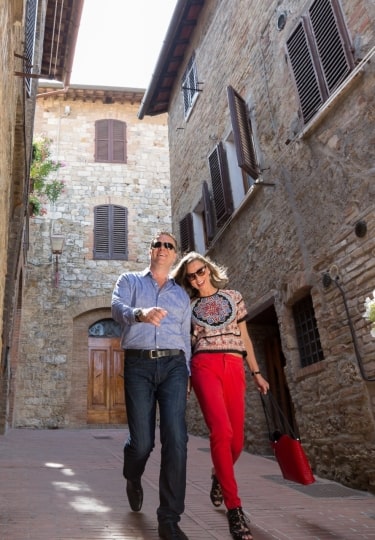With fascinating cities such as Florence, Siena, and Lucca to visit, the best towns in Tuscany are often overlooked on visits to this history-filled region.
However, it is in smaller urban areas such as Pienza, Arezzo, and Volterra where you begin to understand what lies beneath the intricate Renaissance veneer of Tuscany’s cultural wealth.
Away from the crowds, the authentic Tuscany has room to surface in outposts like Pitigliano. In these places, you can come closer to the region’s ancient Etruscan legacy and encounter delicious local delicacies. So head out of the cities and start exploring.
Montepulciano
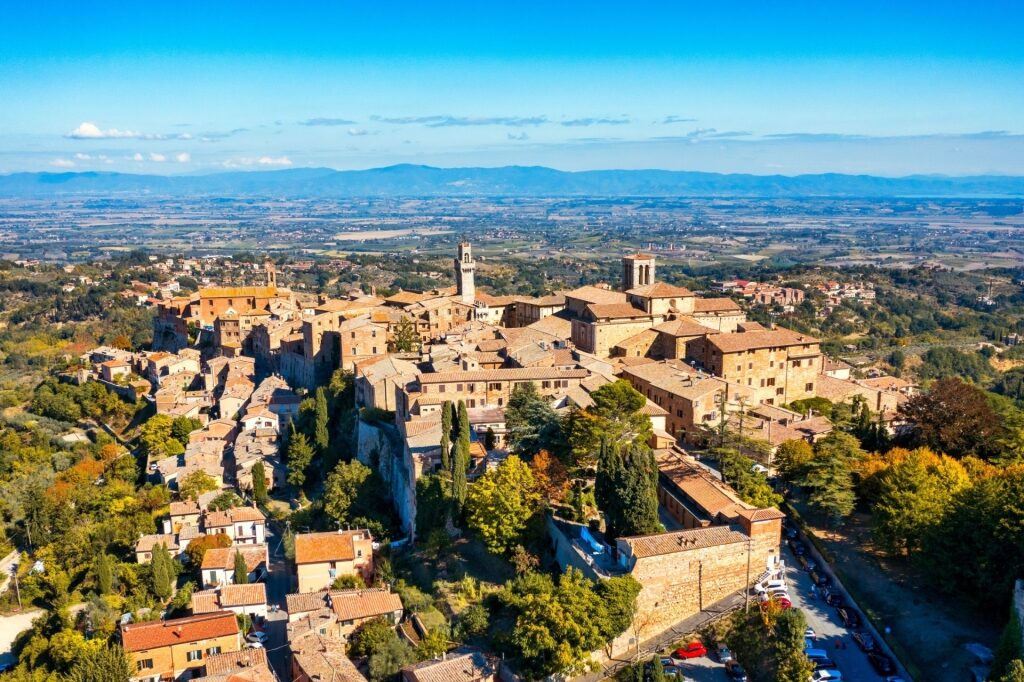
Montepulciano
Made famous by the delicious grape variety from which its namesake wines are produced, Montepulciano is a blissfully positioned hilltop town on Tuscany’s eastern border. Slip on your most comfortable walking shoes for this occasionally challenging ascent, and explore what is easily one of the best towns in Tuscany.
Besides it being almost obligatory to drink cherry-forward red wine while visiting, Montepulciano’s wandering streets are also peppered with interesting stops. Enter through the lofty arches of Porta Prato or Porta della Farine, the town’s medieval city gates. You’ll soon find your way to the Corso.
The town’s high street, the Corso is a strip of colorful homes, potted plants, and shops offering artisan leather goods, souvenir magnets, and, yes, bottles of Montepulciano. Numerous lanes run off the Corso, with delightful bars and boutiques concealed down them.
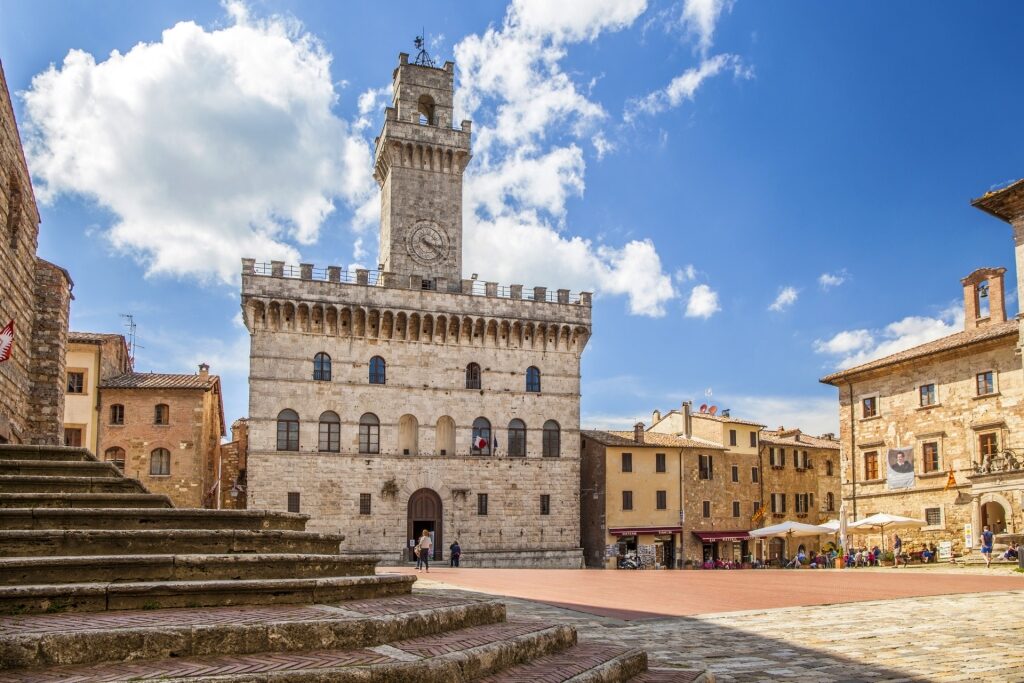
Piazza Grande, Montepulciano
The Piazza Grande is the town’s heart, a wonderful expanse of weathered stone cobbles and brick overlooked by the cathedral and a grouping of grand palazzi.
Once you’ve peeked in the duomo and the 16th-century Palazzo Contucci, find your way to the Church of Sant’Agostino. Within this sacred space, which took two centuries to complete, you’ll find a crucifix created by Renaissance sculptor Donatello.
Pick up a restorative espresso at Caffe Poliziano. The café is named for Agnolo Poliziano, a medieval poet and local boy considered to be the most significant of the 15th-century Italian poets. You can find his old home nearby.
However, while in Montepulciano, nothing beats relaxing at the Romantico restaurant with a glass of the local vino and a sunset over the Val d’Orcia.
Barga
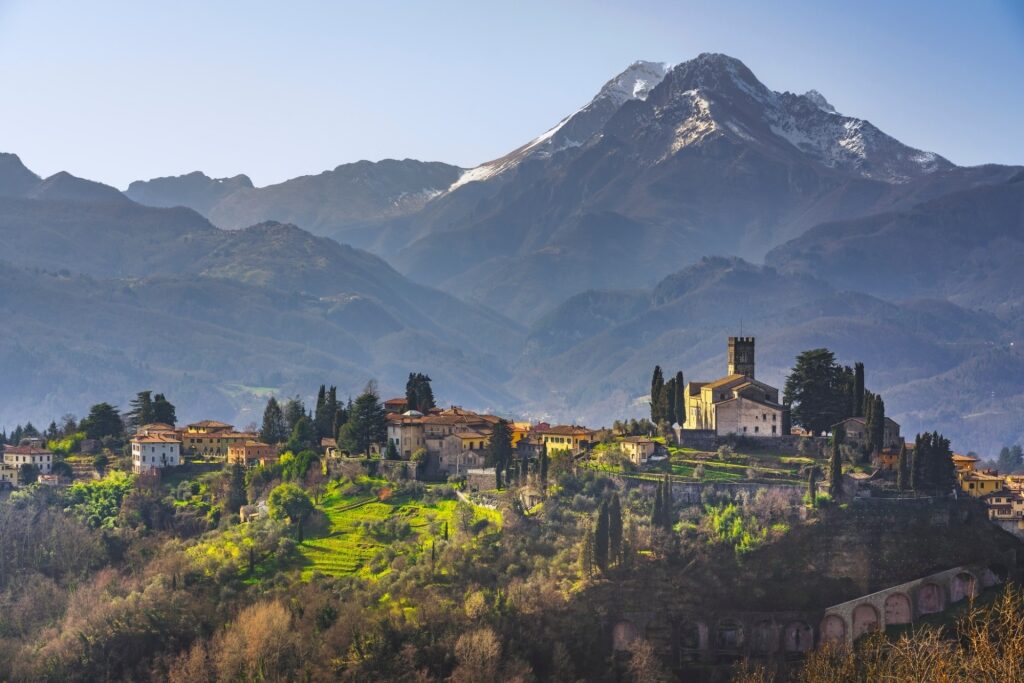
Barga
One of the I borghi più belli d’Italia, a non-profit association promoting “the most beautiful villages of Italy”, Barga perches scenically atop a hill in the north of Tuscany, the barren peak of Pania della Croce looming nearby.
Barga has a fascinating history. Due to its location in the mountains, it grew into an important trading outpost in the Middle Ages. Silk production was also significant in Barga, and in WWII it was a link in the Gothic Line of the Axis forces.
And then there’s its quirky side. Barga is a “European Gnome Sanctuary”—as in garden gnomes. It’s also famous for its connection with Scotland after waves of Barghigiani emigrated there at the turn of the 19th century.
You’ll even spot a red phone box in the town center, a gift from the UK, now known as “the smallest library in Tuscany”.
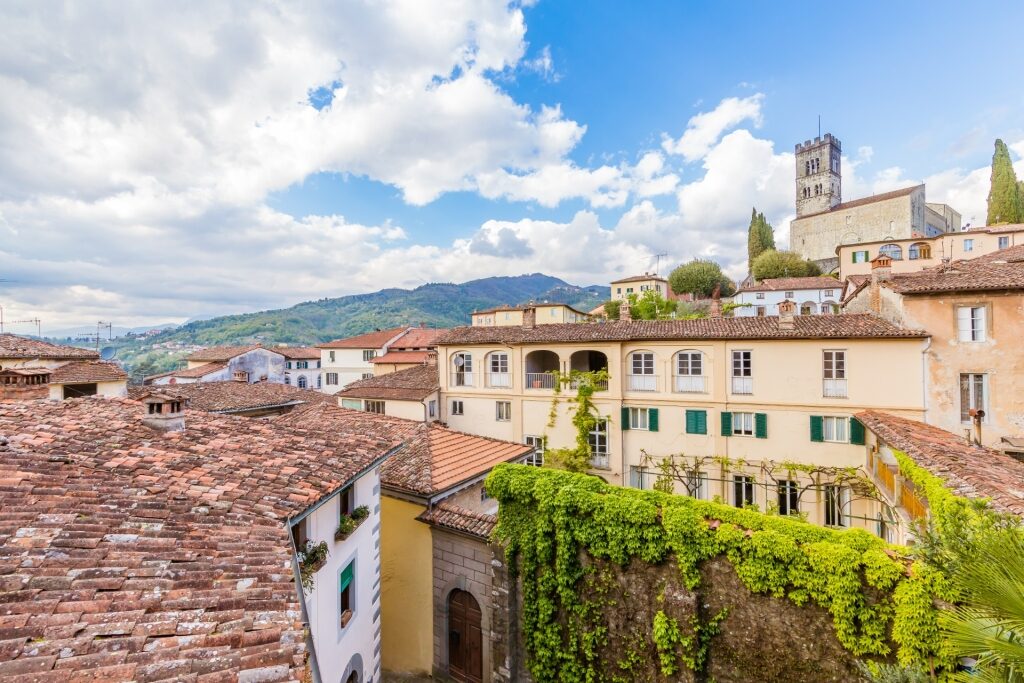
Barga
Alongside the Scottish/Italian accents, expect warm-hued Italian architecture, art, and the idiosyncratic Tuscan cuisine you’d expect of one of the best towns in Tuscany. There’s also the Romanesque Duomo di San Cristoforo to explore, or the house museum of 19th-century poet Giovanni Pascoli.
While there are enotecas aplenty in Barga, the town is also home to the zero-impact Distilleria Indie. Try the gin or the herbal Amaro del Riccio digestif during one of its highly regarded distillery tours.
San Gimignano
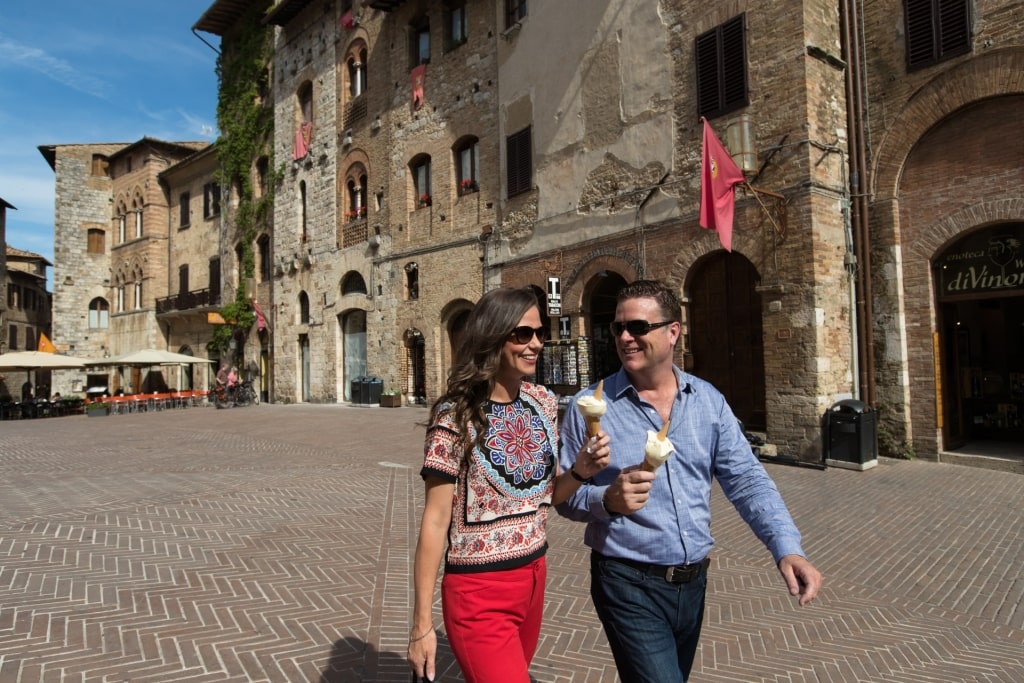
San Gimignano
One of the best things to do in Tuscany is to visit San Gimignano, a remarkable medieval town that earned a UNESCO listing for its tower houses. So unique are these that they’ve earned San Gimignano the nickname “the town of fine towers”.
While you’ll find stout, stone towers throughout the Italian region of Tuscany—a notable example is the oak-capped Guinigi Tower in Lucca—the medieval residents of San Gimignano were building what were essentially early skyscrapers.
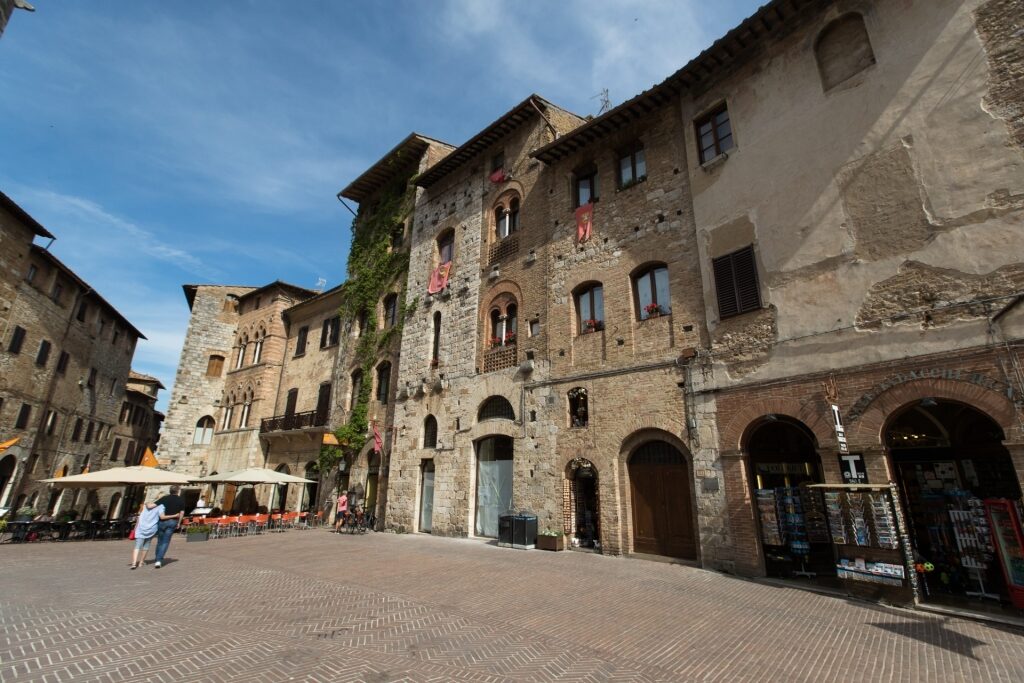
San Gimignano
Grown fat on the trade of pilgrims stopping over on the Via Francigena to Rome, the noble families of San Gimignano poured funds into their vertical status symbols.
A prime example is the Torre Grossa. Built in 1310, it’s open to visitors today to help you understand what life was like inside these outwardly austere power homes.
While Tuscany is famed for its towers, of which fourteen remain standing today, you can see a ceramic model of the building frenzy that occurred centuries ago in the local museum. Returning to ground level, San Gimignano is also famous for its local delicacies. The golden ham and aromatic, equally golden Vernaccia DOCG wine pair very well together as an aperitivo.
Carrara
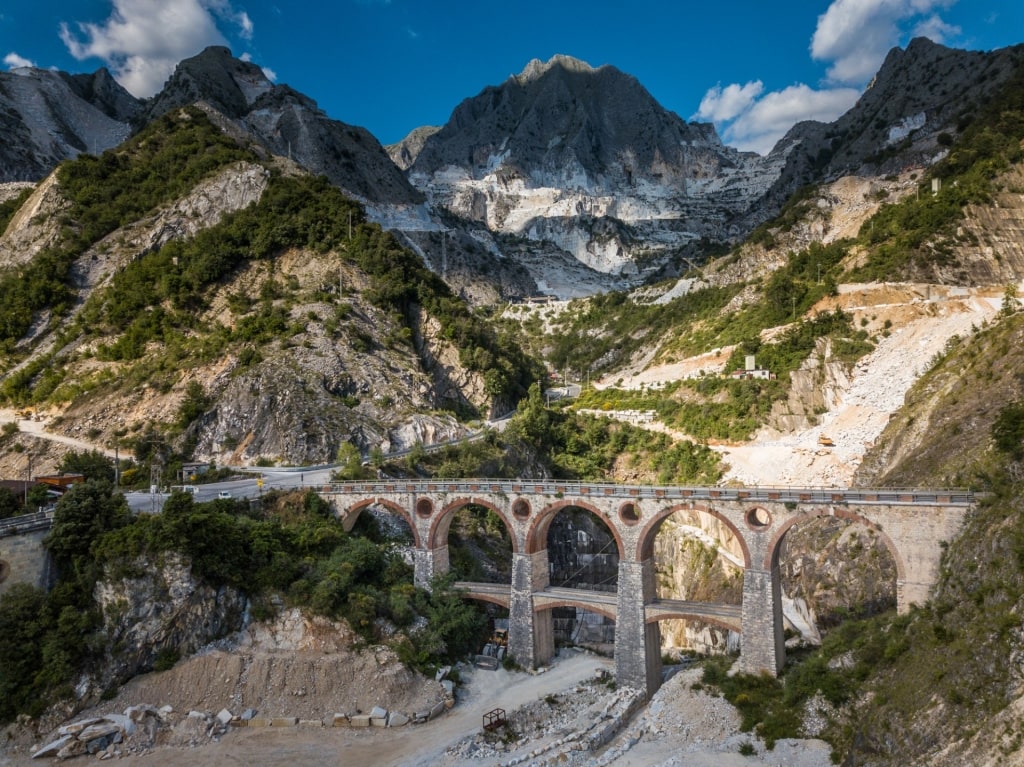
Carrara
One of the best towns to visit in Tuscany, and one of the most significant, is Carrara. You’ll probably be familiar with the name due to its association with the creamy marble that’s used in architecture, sculpture, and, more prosaically, kitchen worktops.
The town is located north of Viareggio, between the coast and the Apuan Alps. It’s among these rugged contours that you can find and tour the quarries that have been providing marble to kings and popes since the Roman period. Stop into Carrara’s Civic Marble Museum for a deep dive into the history and techniques employed.
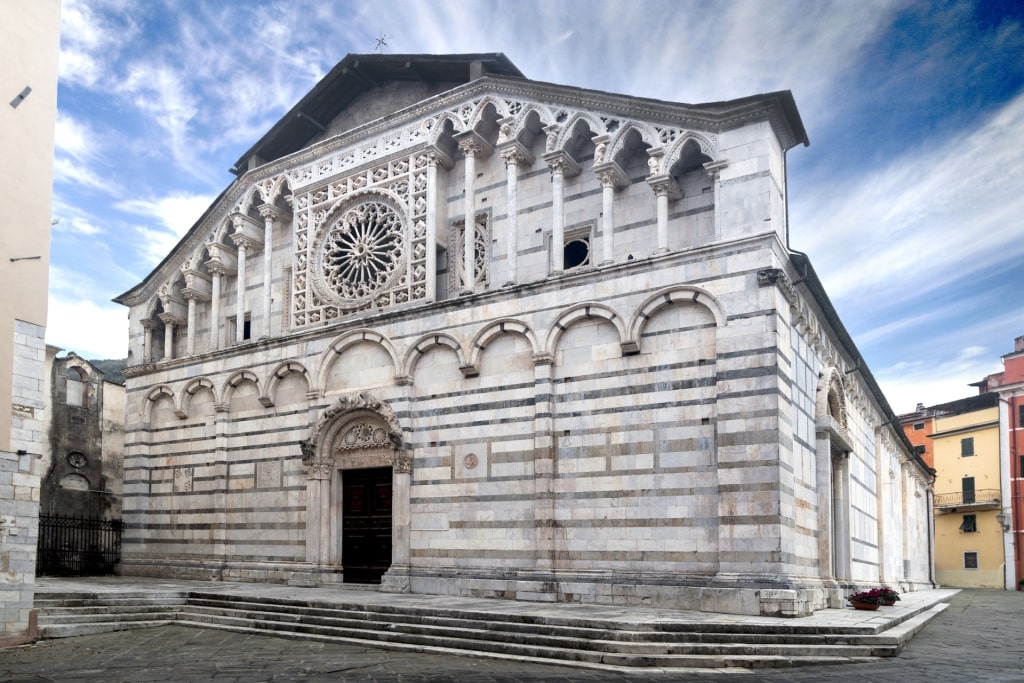
Duomo, Carrara
Just strolling through the medieval town is like a tour of Carrara’s natural treasures. The facade of the Romanesque duomo is an alternating mix of black Colonnata and white Luna marbles.
With such an important role in the arts that Italy is known for, it’s perhaps no surprise that Carrara is home to several significant art institutions. The grand Malaspina Castle houses the Academy of Fine Arts and there’s the MudaC, the Museum of Arts in Carrara, as well as the CARMI—Carrara and Michelangelo Museum located in Padula Park.
Read: Ultimate Guide to Art in Florence
Arezzo
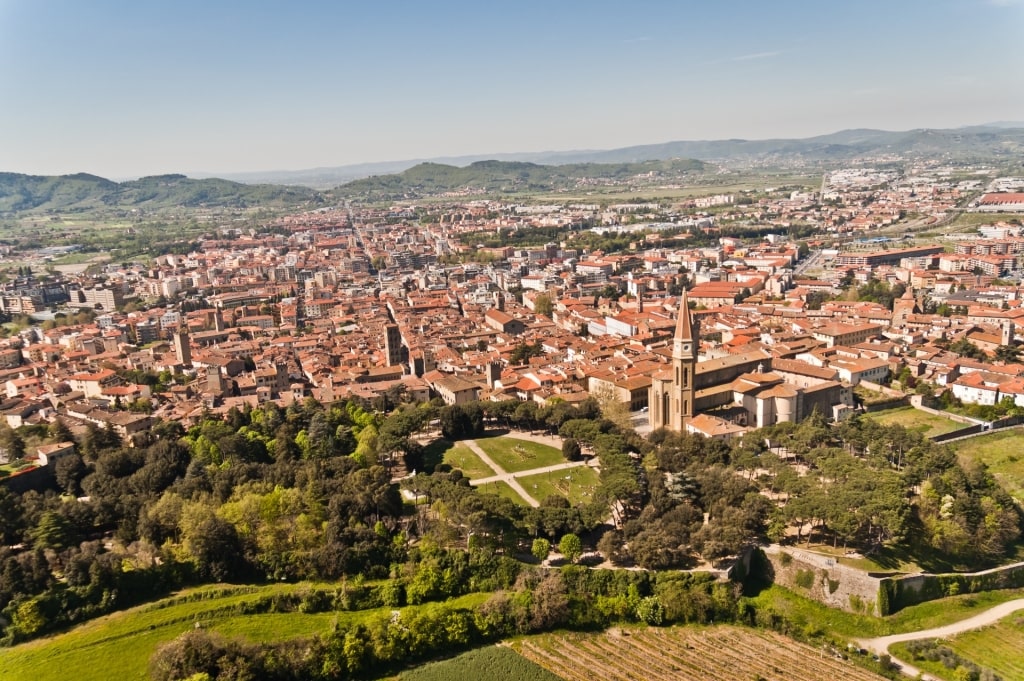
Arezzo
One of the best towns in Tuscany to visit, Arezzo, in the east close to the rolling hills of Umbria, has an intriguing past.
Its ancient street plan was familiar to the pre-Roman Etruscan civilization. And Arezzo’s strategic importance was sustained into the Middle Ages.
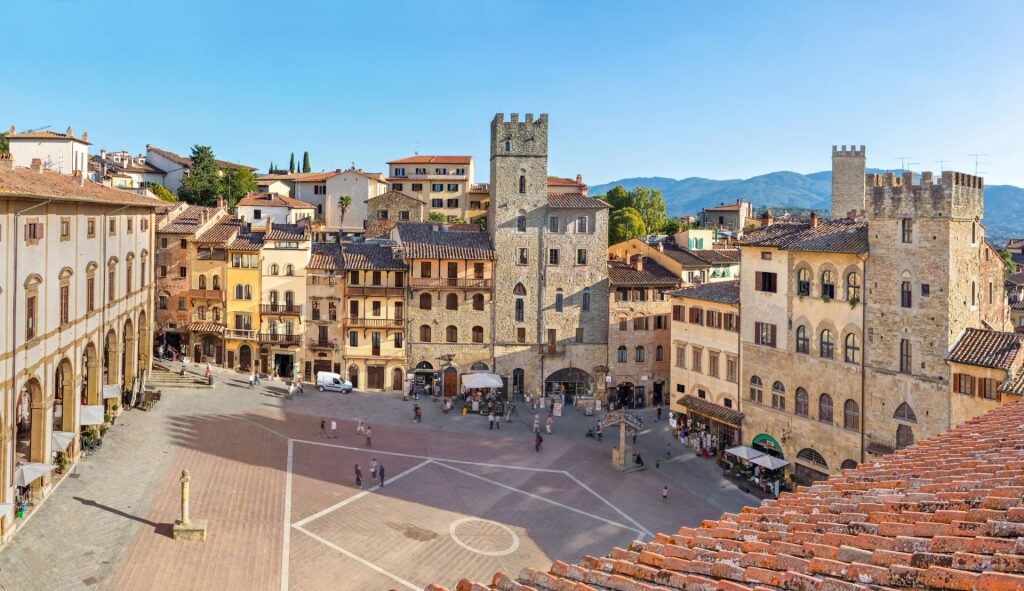
Piazza Grande, Arezzo
The famously beautiful, sloping Piazza Grande speaks to the town’s success through the centuries. Arezzo was a center for pottery production during the Roman era and flourished, architecturally and financially, as part of the Holy Roman Empire under the Lombards. The Medici star fortress represents yet another moment in Arezzo’s many-chaptered past.
The town’s most famous son Giorgio Vasari also enjoyed a connection to Florence. This renowned architect and artist helped shape the Tuscan capital into its Renaissance splendor. It’s possible to visit his house in Arezzo, now transformed into a museum about his life.
Arrive on the first Sunday of the month, and you’ll walk among the treasure-laden stalls of Italy’s oldest antiques fair.
Montecatini Terme
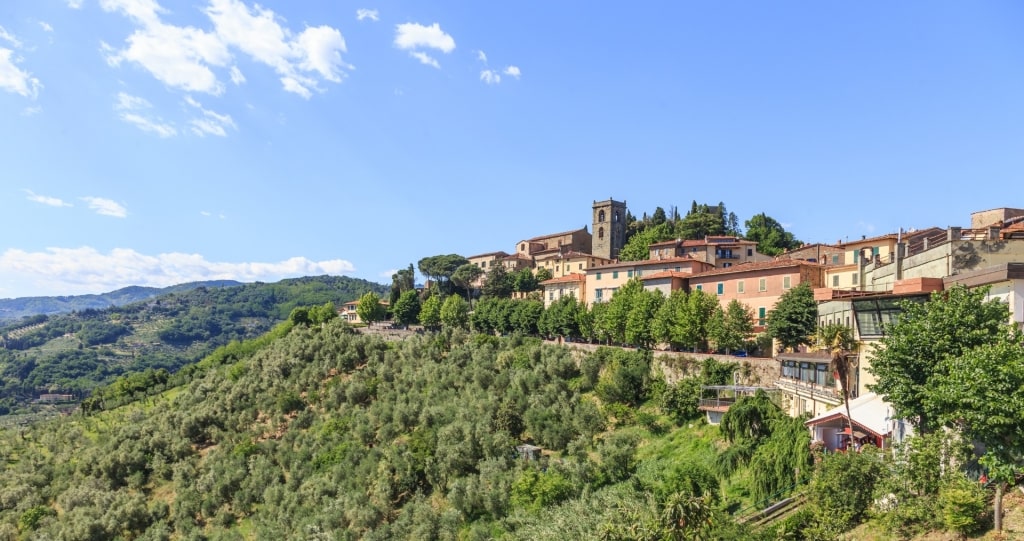
Montecatini Terme
The “terme” of UNESCO-listed Montecatini Terme indicates the presence of thermal spa waters in this art nouveau Tuscan town.
Situated in the Valdinievole area, a short drive inland from Lucca, Montecatini Terme’s natural springs were discovered as far back as the 14th century—and possibly earlier, as the abundance of Paleolithic remains suggests.
The Parco delle Terme complex that stands today was built in the 18th century under the direction of Leopold of Habsburg-Lorraine, former Grand Duke of Tuscany. Resplendent in tile and marble with intricate decoration throughout, the art nouveau baths tap six of the 11 thermal springs for its various mineral-rich pools.
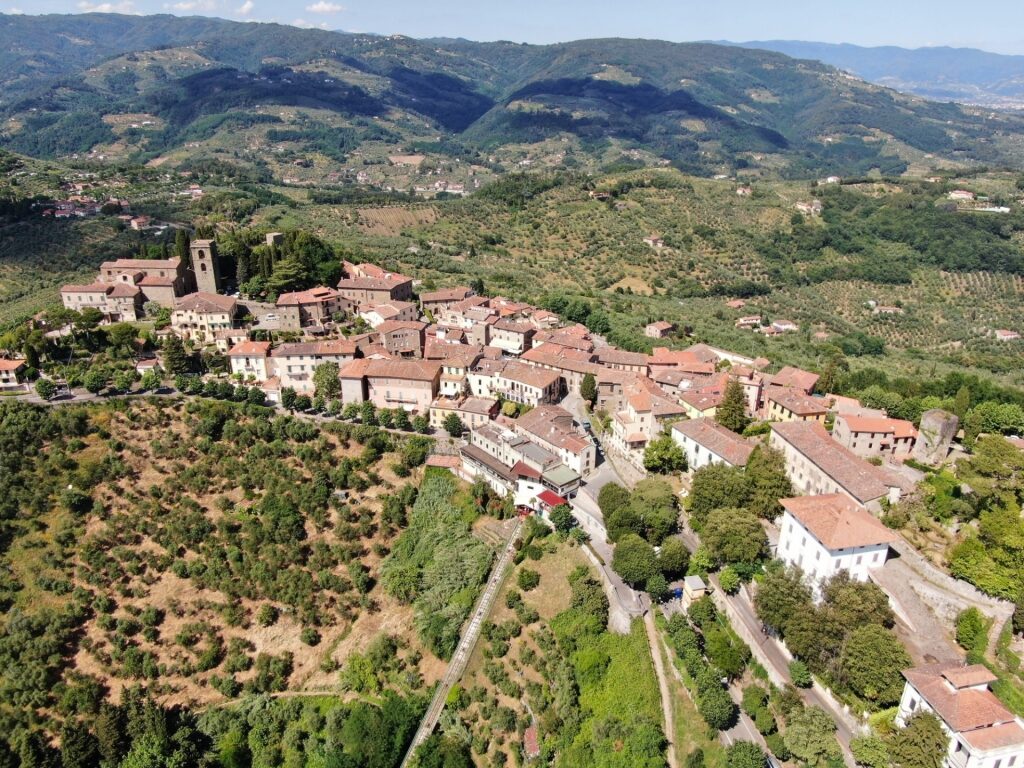
Montecatini Alto
Once you’ve experienced the waters, hop on the funicular to Montecatini Alto. This beautiful medieval village, the “original” Montecatini, overlooks the spa town. Its Piazza Giuseppe Giusti is a wonderful place to stop for lunch; try the bistecca alla fiorentina at Ristorante ‘Caffè Giusti’ dal 1898.
Returning to the lower elevations, wander the Viale Verdi to drink in the rest of Montecatini Terme’s impressive art nouveau legacy. The Montecatini Contemporary Art Museum, located inside what used to be the town’s rather grand post office, holds an eclectic collection of works by artists from Cezanne to Banksy.
Colle di Val d’Elsa
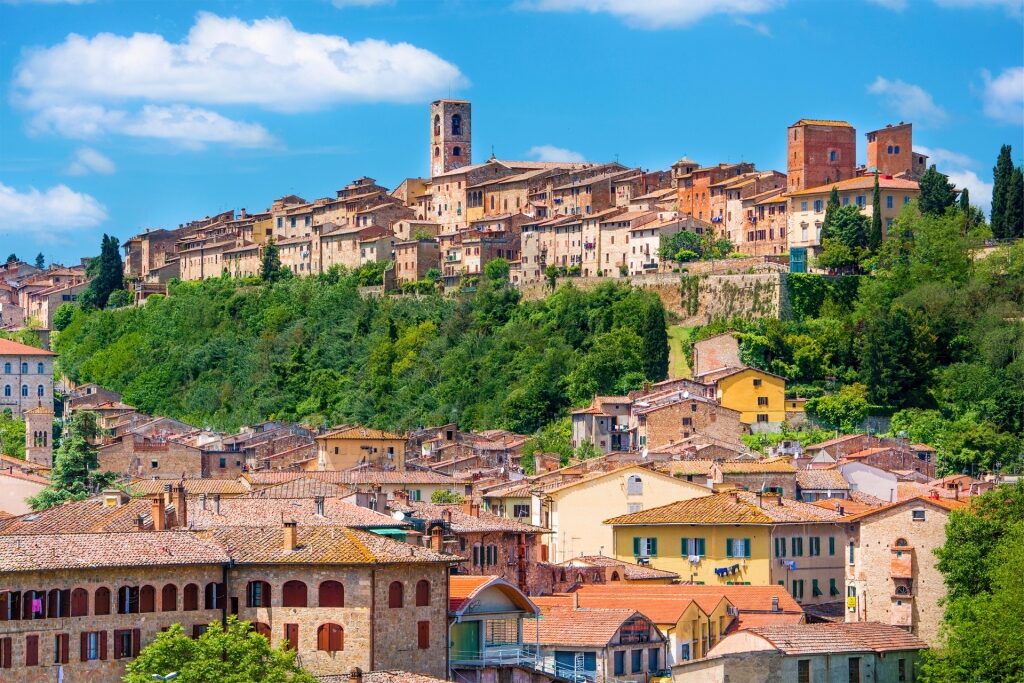
Colle di Val d’Elsa
Close to the medieval city of San Gimignano, the town of Colle di Val d’Elsa sits along the well-worn pilgrimage path that helped fund the ambitious medieval towers found here and in its near neighbor.
But while San Gimignano is known for its tower houses, Colle, as the town’s name is typically shortened, is best known for its crystal production. Discover why this hilltop town has earned the moniker the “Bohemia of Italy” at its Museum of Crystal, housed in former glassworks glittering with examples of the local artisans’ skill over the centuries.
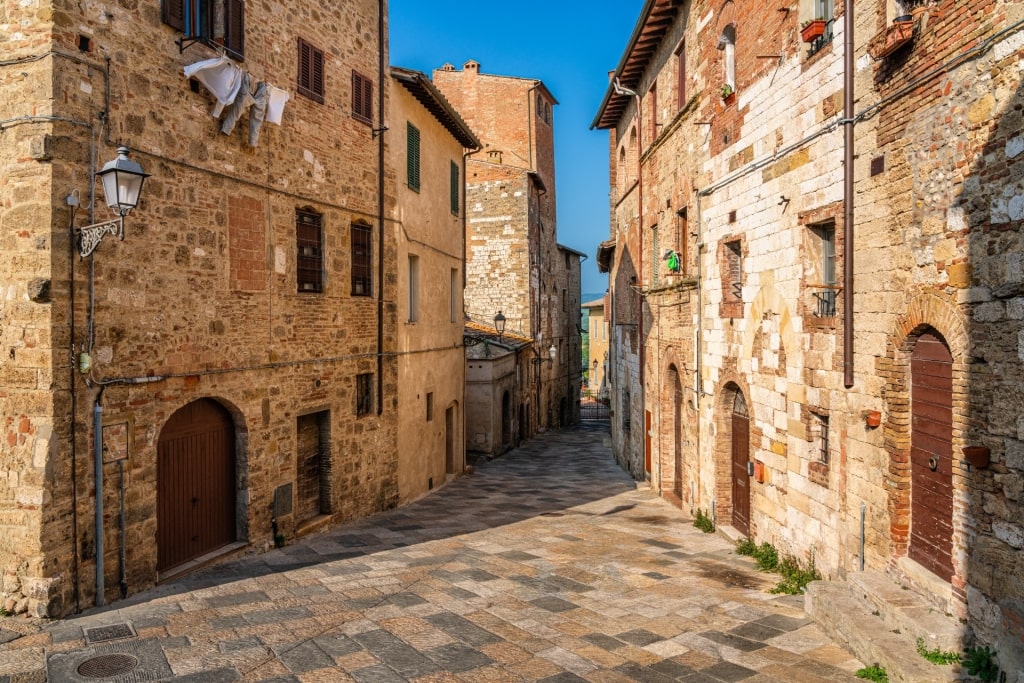
Colle di Val d’Elsa
If you’re visiting on the first Sunday of the month, glassmakers put on demonstrations in the town’s squares. You’ll see the engraving of goblets, or molten glass artfully wrought into a sculptural swan.
In Via Guiseppe Garibaldi you’ll find an elevator that connects the upper and lower parts of the town. Colle Alta, or the upper part, is the official historic center. Upon arrival, you’re met with a panoramic viewpoint that’ll have you searching your pockets for a camera. Even more impressive views are available from the Baluardo defensive fortification.
Volterra
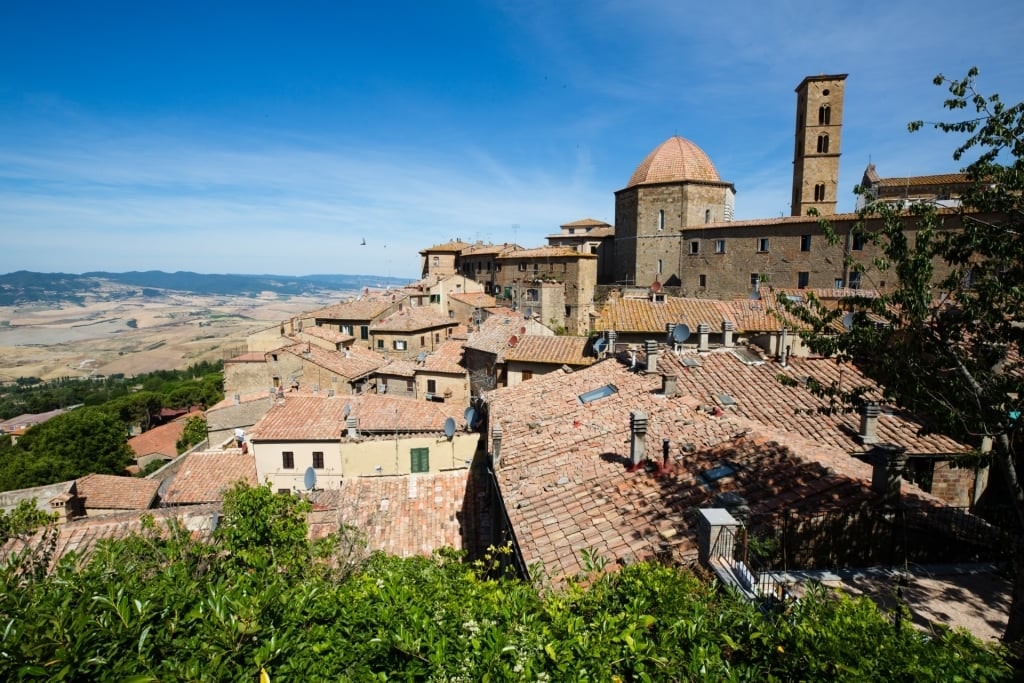
Volterra
Another of the best towns in Tuscany with a strong artisan bent, Volterra has been a center of alabaster production since the pre-Roman Etruscan civilization.
With plentiful alabaster mined from the hills close to the town, the Etruscans used this malleable mineral to create symbolic and decorative objects. The most famous are the funerary urns—exhibited in the town’s comprehensive Guarnacci Museum—made from what the Etruscans called “the stone of the dead”.
Besides the narrative of its alabaster industry, Volterra—double-walled and rambling over a hilltop south of the Italian city of Florence—is full of impressive historic sights. There is the well-preserved Roman Theater, an 8th-century Etruscan Acropolis, and the 13th-century Palazzo dei Priori located in the main piazza.
Pitigliano
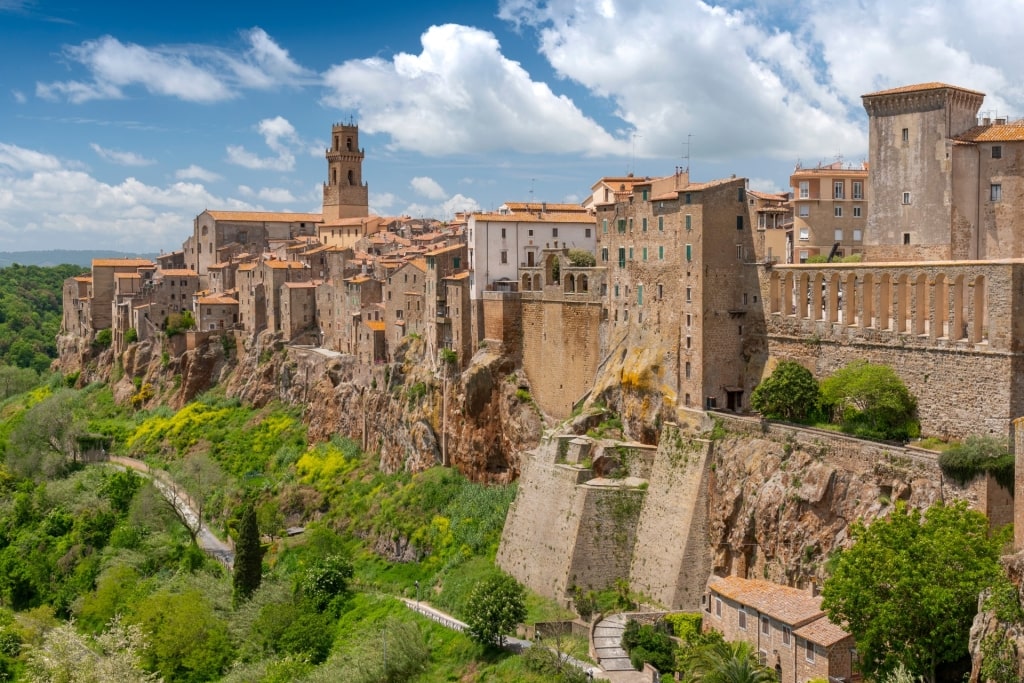
Pitigliano
Another of Tuscany’s plentiful “most beautiful villages of Italy”, Pitigliano is set on a dramatic tuff escarpment. The meeting of volcanic rock and cut stone foundations has that organic appearance Italians seem particularly skilled at creating, producing the illusion that Pitigliano almost grows out of the escarpment.
In the southern Maremma region, the main theme of Pitigliano’s medieval story was being caught in the geographic midpoint between the Papal States and the Grand Duchy of Tuscany. Learn more at the town’s excellent museum housed within the stately Palazzo Orsini.
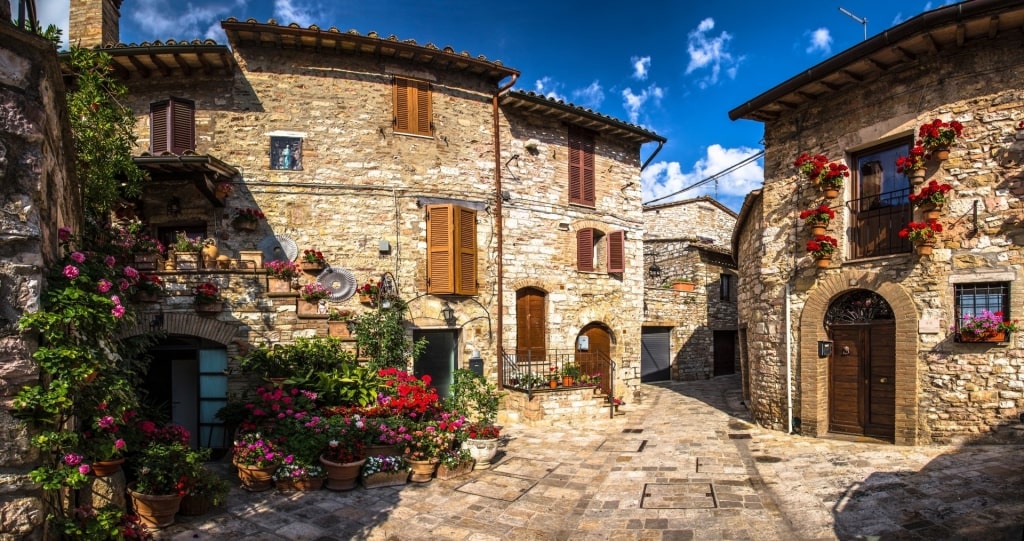
Pitigliano
This history has also been preserved in Pitigliano’s charming streets. The headline archaeological site is the Medici Aqueduct, an impressive example of Renaissance ingenuity.
The 16th-century aqueduct took over a century to build and the extensive delays were caused mainly by the rough terrain. The famous seven-spouted Fontana Delle Sette Cannelle is a symbol of its success.
Pitigliano is also known as “Little Jerusalem” for its thriving Jewish population, established in the 15th century. Its Jewish ghetto, synagogue, and Museum of Jewish Culture are all worthwhile stops. At the museum, you can see a cellar, excavated from the tuff, that was used in the production of kosher wine.
Afterward, raise a fruity glass of Bianco di Pitigliano DOC to those ingenious medieval winemakers.
Read: A Guide to Italian Wine & Food Pairings
Pienza
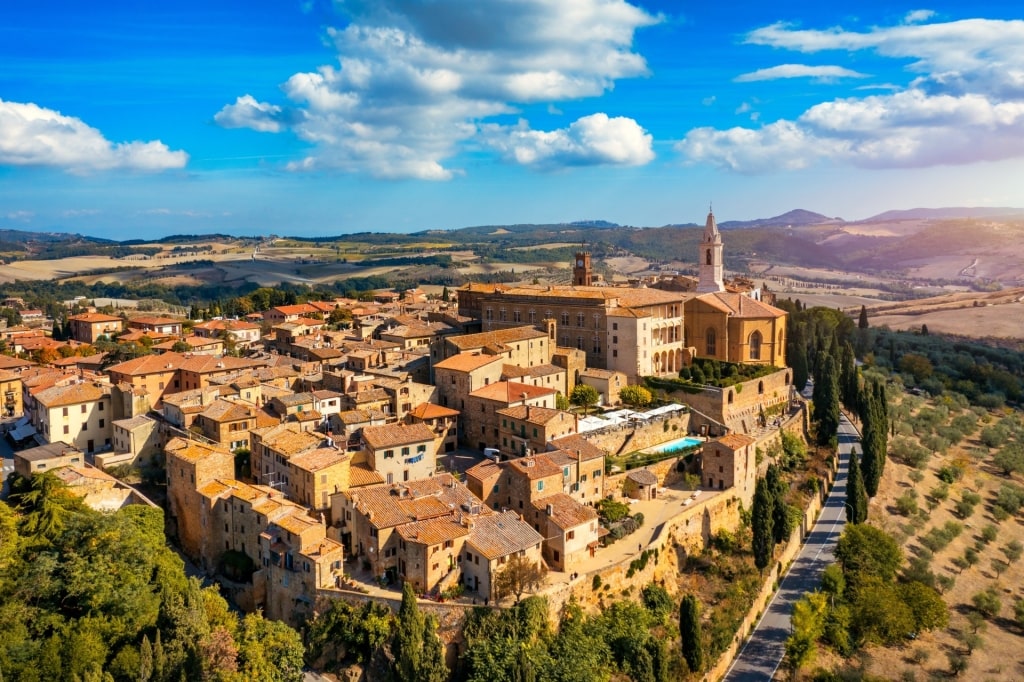
Pienza
A UNESCO World Heritage Site, Pienza is famous as the wellspring of Renaissance urban planning.
The town, located in the Val D’Orcia region close to Montepulciano, used to be known as Corsignano. Its most famous son, Pope Pius II, decided to transform his place of birth into an “ideal” Renaissance town. Architect Bernardo Rossellino was tasked with fulfilling the pope’s vision, and four years later Corsignano became Pienza, or the “city of Pius”.
Rossellino’s deployment of harmonious lines and rational spaces means that the feel of this medieval town differs from that of some of its older neighbors.
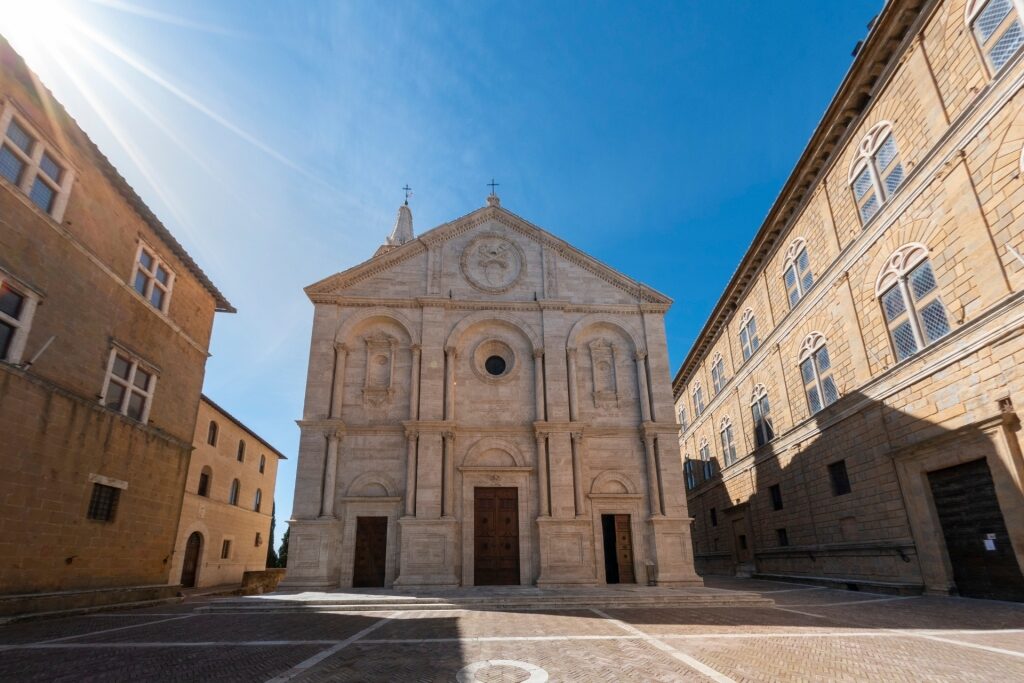
Cathedral of the Assunta, Pienza
Wander past the magnificent Palazzo Piccolomini, the Cathedral of the Assunta, and the trapezoidal Piazza Pio II, while appreciating the orderly city planning that has an impact on urban planning today.
For a thorough understanding of how Corsignano became Pienza, explore the exhibits of its Archaeological Museum. After you’ve walked the city walls and lavender-filled alleys, settle in at La Terrazza del Chiostro with a bottle of Brunello di Montalcino and pici pasta hidden beneath a blizzard of Pienza’s famous pecorino cheese.
Read: Best Beaches in Tuscany
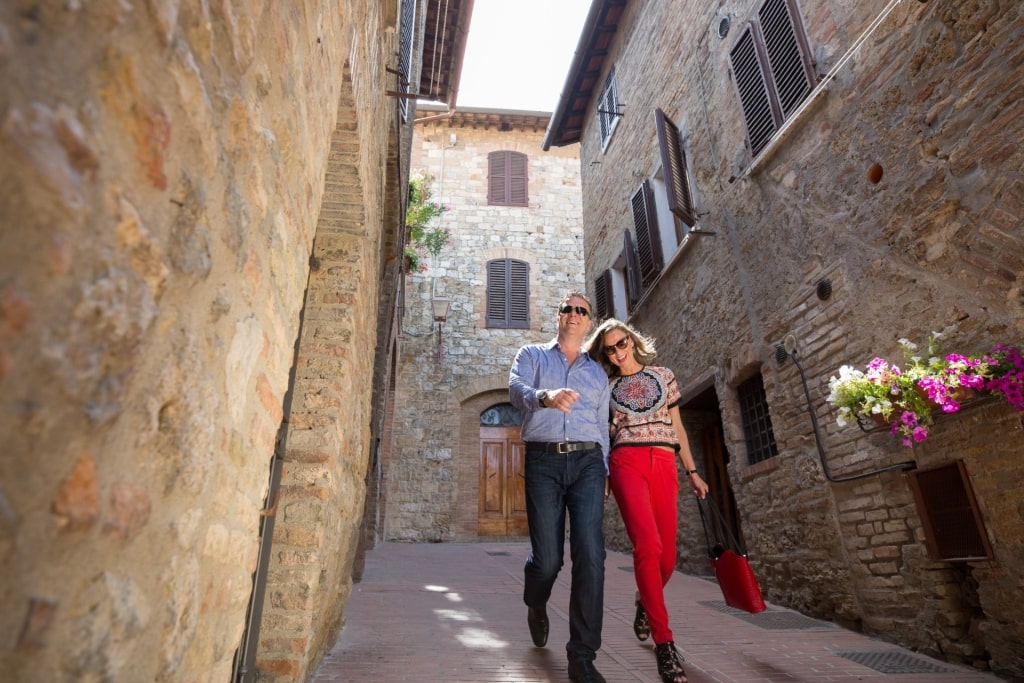
San Gimignano
Explore the best towns in Tuscany on a cruise to spellbinding Italy with Celebrity Cruises. Browse our Tuscany cruises and book an unforgettable vacation.
